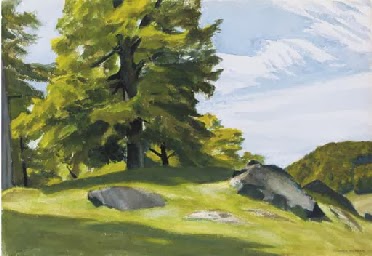Edward Hopper v.s. Thomas Kinkade- Who's The Painter of Light ?

Edward Hopper, Rooms for Tourists, oil, 1945 An oil painting by Thomas Kinkade One of the best reasons to look at art is it teaches us how to enjoy our eyes. Paintings are always lessons in seeing. Really good paintings simply help you have a lot more fun. Thomas Kinkade, probably one of the best known American artists and certainly one of the best marketed, passed away in the spring of 2012. Kinkade called himself "The Painter of Light", a slogan that had a certain ring to it. Kinkade's ubiquitous images are likely some of the first paintings most Americans were likely to have stumbled across. But if one keeps looking, there are probably other artists who have a great deal more to say to us about painting light with real authenticity. Longtime readers of this blog won't be surprised if I offer Edward Hopper as an alternative. Comparing the two landscapes above is revealing of some of the deeper essentials of painting. If painting is primaril...




